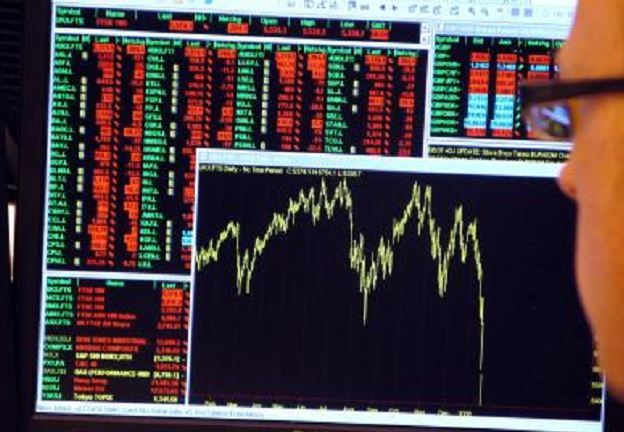
Despite global markets descending into chaos after Britain’s vote to leave the European Union, the FTSE 100 Index has clawed back all of its post-Brexit losses.
However, the FTSE 250 Index – seen as a better barometer of the health of UK business – remains in the doldrums.
:: How hard has the FTSE 250 Index been hit by Britain’s exit from the European Union?
Britain’s vote to leave the European Union dealt a hefty blow to both equity markets. More than £50 billion was wiped off the value of the UK’s biggest companies on the FTSE 100 when the market closed last Friday, as it slipped 3.15%.
London’s premier index has since recovered lost ground. It is now 4% up on its Brexit closing value.
The FTSE 250 is a different story. Not only was the scale of its slide greater last Friday, closing 7% down, but its recovery has been non-existent. It remains 0.5% lower on last week’s closing value.
Casualties on the second tier include Jacamo and Simply Be clothing retailer N Brown, which has fallen nearly 25% in a week.
Challenger banks Virgin Money and Metro Bank have also taken a hammering, slipping 31% and 15% over the period, while housebuilder Bovis Group plunged 28%.
:: Why have the FTSE 100 and the FTSE 250 reacted so differently?
The reason comes down to the difference in the profiles. The FTSE 100 consists of international businesses which are more impacted by the success of the global economy rather the UK economy alone.
The FTSE 250 is the opposite. Businesses in the second tier are mainly UK firms trading within the UK market. When the UK economy suffers, the FTSE 250 suffers. It is predominantly made up of mid-sized manufacturers, retailers and service sector firms.
Economists are in agreement that Brexit will take a heavy toll on UK economic growth and even push Britain back into recession. If so, then the torrid time endured by FTSE 250 firms post-Brexit could show little sign of abating.
Analysts at financial spread betting firm IG said blue-chip heavyweights on London’s top flight are not “immune” to Brexit, but they can adjust more easily.
“Large companies can also better adapt to the new situation, as we’ve seen with Vodafone’s declaration that it’s making contingency plans for moving its headquarters abroad, given that only 11% of group profits come from the UK.
“Companies in the FTSE 250 can’t simply move abroad when their client base is in the British Isles.”
However, the FTSE 250’s lacklustre performance does mark a distinct shift. Before Brexit, the FTSE 250 was out-gunning the FTSE 100 when it came to performance, riding high because the UK economy was one of the strongest performers across the globe.
Its top-tier cousin was being stung by bouts of market volatility triggered by global economic factors, hit by growing gloom over global growth and plunging commodity prices. These pressures were bad news for London-listed miners and oil majors, but proved less significant for firms in the FTSE 250.
:: Is the FTSE 250 Index likely to recover soon?
A FTSE 250 recovery is likely to depend on the resilience of the UK economy. If UK growth can withstand Brexit uncertainty without gross domestic product sliding sharply, then it should pick up.
This seems a dim hope, however.
Economists have downgraded their forecasts for the UK economy, saying a recession would be on the cards unless a quick deal could be done with Europe.
IHS Global Insight cut its GDP growth forecasts to 1.5% from 2% for this year and to 0.2% from 2.4% for next year.
Either way, a greater degree of certainty on how the UK economy is likely to perform in the long term will help FTSE 250 firms.
On the currency markets, the sliding value of the pound could be a blessing and a curse for FTSE 250 firms in equal measure. Sterling’s slump will hand a fillip to UK manufacturers, whose products will be cheaper to export.
However, any FTSE 250 business which buys its stock in dollars and sells them in pounds will be squeezed. That said, many firms will have hedged their position in dollars. so may not be impacted in the short term.